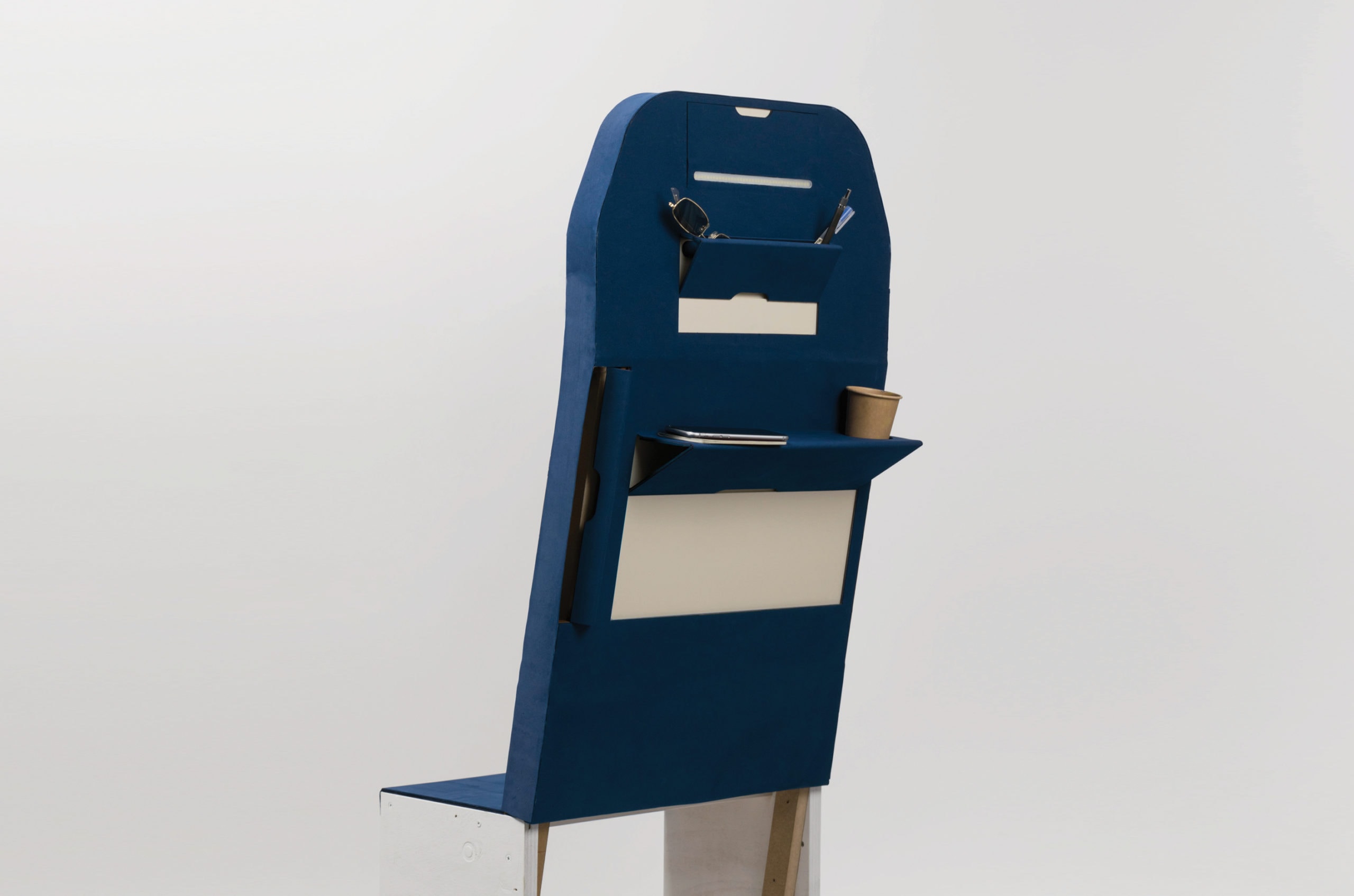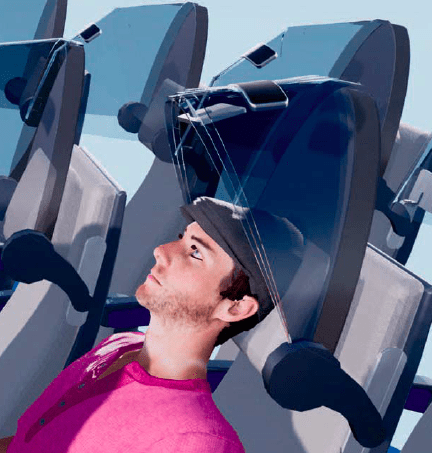Privacy in economy? These student designs shortlisted for a Crystal Cabin Award suggest it is possible.
Brice Bouffort and Jérémy Laurent, students at ENSCI – Les Ateliers (École nationale supérieure de création industrielle) in Paris, want to put an end to elbow-room wars. They developed 23 armrest models before deciding on an “S” shape that increases the amount of contact surface, while adding one inch of width.
In developing their Fighting Proof Armrest concept, they were aided by designers from Safran Seats, who shared insights on the practicalities of armrest production and certification. “We took the current measurement of a Safran armrest and tested all the models with different people … and tried to make the armrest fit every type of body, shape and situation,” Bouffort says.

Other ENSCI students, Stephen Eko Ebongue and Antoine Robin, also working with Safran Seats, developed a concept inspired by Japanese paper folding that gives passengers more areas to cache their belongings with its Origami Skin dress cover. Foldable compartments in the upholstery conceal the ORILamp for adjustable illumination, the ORIShelf for holding small personal items, the ORIDesk for providing a work surface and cupholder, and the ORIPocket for stowing books or magazines.

A more futuristic concept offers passengers the ultimate escape from economy-cabin crowding. The Priva seat’s collapsible hood concept was developed by Golnoosh Torkashvand as part of her doctorate thesis for human-centered design at the Florida Institute of Technology. She conducted research to measure passengers’ levels of satisfaction across 23 onboard activities to identify their greatest needs. The results showed that passengers prioritize rest and relaxation, and that their satisfaction levels were highest when thinking and observing, checking real-time flight status and watching in-flight movies. To accommodate the last of these activities, the hood incorporates a device holder.
Trials of the concept were conducted in conjunction with Delft University of Technology. “They walked around the cabin mock-up in virtual reality and tested the concept,” Torkashvand says. “We got a lot of qualitative feedback on feasibility and ergonomics.”
There are still a few wrinkles to smooth out before Priva can become a reality, including finding a material that would allow for the desired visibility that Torkashvand wants for the hood, but the thought of a cabana class in the skies might appeal to many.
“Space Economy” was originally published in the 10.2 April/May issue of APEX Experience magazine.


